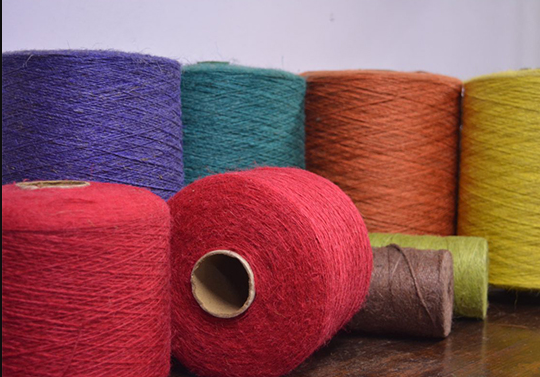Jute is one of the most sustainable natural fibers in the world. It is made from the stem of the jute plant, which grows quickly and abundantly in tropical and subtropical climates. Jute is a versatile fiber used to make various products, including clothing, bags, home decor, and industrial materials.
Jute spun yarn is a type of yarn that is made from jute fiber. It is created by spinning the fiber into a long, continuous strand. Jute spun yarn is strong and durable, making it ideal for various applications.
Understanding Jute Fiber
Here are some of the wonders of jute spun yarn:
- It is sustainable. Jute is one of the most sustainable natural fibers in the world. It is grown without the use of pesticides or herbicides, and it requires very little water. Jute is also a biodegradable fiber, so it does not contribute to plastic pollution.
- It is strong and durable. Jute spun yarn is incredibly strong and durable. It is stronger than cotton and has a higher tensile strength than steel. This makes it ideal for various applications, including making bags, ropes, and other heavy-duty products.
- It is breathable and moisture-wicking. Jute spun yarn is a breathable and moisture-wicking fiber, making it comfortable to wear in hot weather. It is also a good insulator, so it can help to keep you warm in the winter.
- It is versatile. Jute spun yarn can be used to make a wide variety of products, including clothing, bags, home decor, and industrial materials. It is also a popular material for handicrafts and art projects.
- It is affordable. Jute is a relatively inexpensive fiber, making it a good choice for budget-conscious consumers.
Jute Spun Yarn: A Sustainable Choice
Jute spun yarn is a product of the spinning process, where jute fibers are twisted and spun into continuous threads. This yarn inherits the inherent qualities of jute while offering additional advantages:
- Natural Aesthetics: Jute spun yarn has a distinct natural appeal, characterized by its earthy tones and texture. It adds a rustic charm to various products.
- Biodegradable and Non-Toxic: Jute spun yarn is free from harmful chemicals and synthetic additives, making it safe for both consumers and the environment.
- High Tensile Strength: The yarn’s robust nature makes it suitable for crafting sturdy and long-lasting items.
- Breathable and Comfortable: Jute spun yarn is breathable, making it an excellent choice for textiles, particularly in warm climates.
Diverse Applications
Jute spun yarn finds utility in many applications, showcasing its versatility and adaptability. Some notable uses include:
- Textiles: Jute spun yarn is woven into fabrics, producing clothing, bags, and home textiles. Its breathability and natural aesthetics make it a preferred choice for eco-friendly fashion.
- Handicrafts: Artisans worldwide use jute spun yarn for creating handicrafts, including decorative items, rugs, and wall hangings. Its texture and strength lend a rustic charm to these products.
- Packaging: Jute yarn is commonly employed in packaging materials like sacks and bags. Its durability ensures the safe transport of goods.
- Gardening: Gardeners use jute spun yarn for various purposes, including tying plants, creating trellises, and supporting garden structures. Its biodegradability is an advantage in this context.
- Construction: Jute spun yarn is used in construction for applications such as reinforcing concrete and providing insulation due to its insulating properties.
Key Jute Specifications
Understanding jute specifications is essential for making informed decisions when working with jute spun yarn:
- Jute Grade: Jute comes in different grades, ranging from “Tossa” to “White.” The grade affects the fiber’s color, texture, and strength, impacting the final product’s quality.
- Fiber Length: Jute fibers can vary in length. Longer fibers are stronger and more durable, making them suitable for specific applications.
- Color: Jute naturally occurs in various shades, from off-white to brown. The color can influence the appearance of the final product.
- Twist: The twist in jute spun yarn affects its strength and texture. Different twists are suitable for various purposes, such as fine or coarse-textured items.
- Fineness: The fineness of jute spun yarn determines its texture and appearance. Finer yarn is often used in textiles and clothing.
Jute spun yarn is a natural fiber with great potential in various industries due to its versatility and sustainability. The fiber is environmentally friendly and exhibits strength and aesthetic appeal, making it a valuable resource for producing various products. Understanding jute specifications and their diverse applications will help individuals and businesses make informed decisions that align with their environmental goals.

